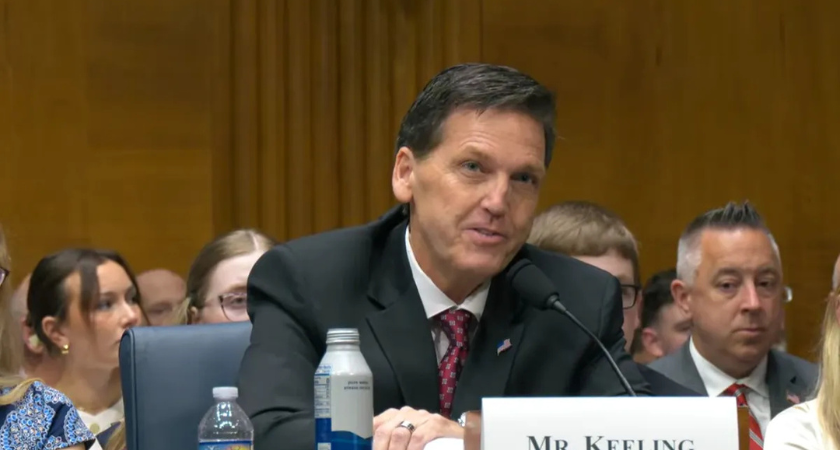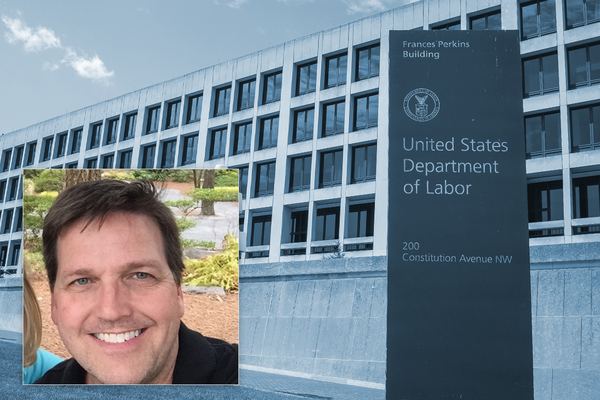
David Keeling has officially been confirmed as the new head of the Occupational Safety and Health Administration (OSHA), marking a pivotal leadership change for the federal agency at a time when workplace safety concerns — especially around heat exposure — are increasingly under national scrutiny.
The U.S. Senate approved Keeling’s nomination in a narrow 51-47 vote on Tuesday, as part of a larger confirmation package that advanced several Biden administration nominees across multiple agencies.

Keeling brings decades of private-sector safety experience to the role. He most recently served as Amazon’s director of road and transportation safety, a position he left in 2023 to pursue consulting work. Before that, he spent 36 years with United Parcel Service (UPS), where he climbed from regional safety manager positions to become vice president of global health and safety.
His appointment comes at a time when OSHA is preparing to finalize a federal heat safety rule, a long-awaited regulation that would require employers to ensure access to water, rest, and shade for workers exposed to high temperatures. The agency recently extended the public comment period on the draft rule through the end of October, signaling strong public interest and debate.
At his confirmation hearing before the Senate Committee on Health, Education, Labor and Pensions in June, Keeling emphasized his belief that effective safety reform starts with input from workers on the ground.
“The best source of safety improvements originates with the people who perform the job every day,” he said during his testimony.
Keeling outlined a forward-looking vision for OSHA that involves updating outdated standards and leveraging technology to prevent injuries before they happen.
“Some standards have become antiquated or unusable in the face of job modernization or technological advancements within the workplace,” he noted, calling for modernized data collection systems to better track risks and intervene early.
“We must take advantage of existing global industry consensus standards which have gone through much more rigorous review, regular updating, and continuous improvement than have many of OSHA’s existing rules,” Keeling added.
The new OSHA head is expected to push for digitally enhanced enforcement mechanisms, including predictive analytics and cross-industry benchmarking, to proactively identify hazards rather than responding reactively to workplace incidents.
Keeling’s nomination drew support from across the safety and labor community. The National Safety Council hailed him as “a proven safety leader who will help continue the agency’s long legacy of protecting the health and wellbeing of our workers.” Similarly, the International Brotherhood of Teamsters, of which Keeling was once a member, voiced approval, citing his “deep understanding of both frontline and executive-level safety operations.”

Sarah Isbell, a leader in the water and infrastructure industry who previously collaborated with OSHA on safety partnerships, said Keeling’s appointment “signals a renewed focus on practical, results-oriented safety strategies that align with the realities of modern work environments.”
However, not all stakeholders are convinced. The National Employment Law Project (NELP) and several worker advocacy organizations expressed skepticism about Keeling’s corporate background, warning that he could prioritize employer perspectives over stronger safety enforcement — especially regarding the contentious heat protection rule.
Critics point to the fact that Amazon and UPS have previously lobbied against federal heat standards and faced OSHA citations for heat-related injuries. During his June hearing, Keeling said he favored “industry-led standards” over government mandates, arguing that such standards are “updated more frequently and undergo more rigorous peer review.”
Still, OSHA observers believe Keeling’s appointment could bring long-term stability and modernization to the agency, which has been without a confirmed leader since the Biden administration began. His combination of corporate experience and operational know-how may accelerate ongoing regulatory efforts, particularly in areas like construction safety, climate resilience, and worker health monitoring.
With heat-related illnesses on the rise and workplace automation evolving rapidly, Keeling’s tenure will likely define OSHA’s balance between innovation and enforcement. As one safety consultant noted, “Keeling’s challenge will be turning industry efficiency into worker protection — not the other way around.”
Originally reported by Megan Quinn in Construction Dive.